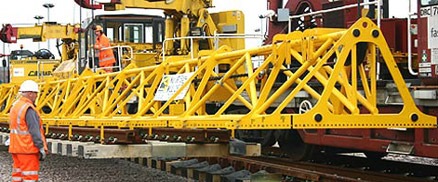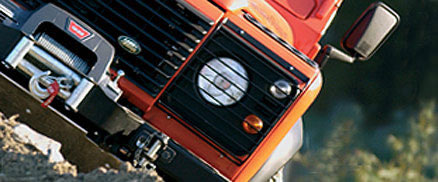January 21st, 2011
Toe jacks are sometimes equipped with adjustable feet to allow for settlement in smaller places. The fingers of the shots of the feet can be lowered and raised at the same time, using a specific level control. The first is a hydraulic jack toe, which is the based on the automated system. The other is manual, making to the feet. High capacity of shots of the feet are equipped with thin fingers are the most popular today as they get much easier than before.
This new development of a toe making is important, especially in conditions that require precision and accuracy. Toe jacks are specialised to access different types of lifting. Toe jacks can work both the ways, either alone or in coordination with other toe jacks. The main usage of hydraulic toe jacks is to give small lifts so that enough space is created to allow clearance of other moving items. However when different toe jacks are pipelined they can have parallel movements. Multiple toe jacks can move at the same rate of speed and at the same time when controlling them manually. The toe jacks can also be equipped with standard grip free hosing to provide user safety. Pipelined toe jacks can also have an option of doing harmonised work with the aid of an external pump which can control all the “toe jacks” alone through the coupling technique.
The usage and the type of load to be lifted are based upon the choice of the toe jack used. A Ratchet toe jack is used when you want to lift lighter masses up to 5-15 tonnes. This toe jack is manually controlled which is usually placed in an upright position but the height can vary through the adjustable knob. It is also light weight when compared to the other kinds of toe jacks. If the mass exceeds 15 tonnes then a bottleneck toe jack is the ideal choice. However heavier masses are lifted through a compact toe jack.
Posted in Arbil Lifting Gear |
December 31st, 2010
Material handling needs differ from application to application. Ingersoll Rand offers numerous hoist types with a range of options that can be matched to meet your specific requirements. When the time comes to select the appropriate hoist for your needs, consider the following criteria:
Maximum load
Consider the maximum load the hoist will need to accommodate. Ingersoll Rand hoists have weight ratings from 275 lb to 6 tons. Consider hoist speed. The speed requirement of a hoist is dependent on the corresponding cycle time of the task to be performed – lift, transport, lower, return, start again.
Installation requirements
Ingersoll Rand hoists, whether hook or trolley, can be mounted on several beam configurations. Compact for low headroom requirements, these hoists can be mounted in areas where others can’t.
Air supply
To ensure maximum operating performance, Ingersoll Rand rotary-vane air hoists (except Palair Series) require air supplies that continually provide clean, lubricated air at sufficient pressure and volume. Ingersoll Rand hoists require 90 psig at 65 to 70 scfm.
Control method
Our rotary-vane air hoists control lift and descent by admitting proportional amounts of air to the motor through a valve. Ingersoll Rand offers two control systems:
1. Pendent control system — a 3-hose pilot pressure / bleed system opens and throttles the valve.
2. Pull-chain system — operator-controlled pull chains attached to arm open and close the valve.
Posted in Arbil Lifting Gear |
November 28th, 2010
Personal fall protection systems are required when an operative is working at an elevated level with an unprotected side or edge, which can be at any height. The system must be designed in such a way to prevent the operative from free falling more than 2 metres or striking a lower level. One of the ways that a company can accomplish this task is by using a Fall Arrest system
Key Components of a Fall Arrest System
There are a number of issues that need to be addressed when considering using a fall arrest system:
The maximum impact force for a full body harness is 6kN and 10kN for the anchorage point. Calculating the impact force is difficult because there are so many variables. These variables include fall distance, person’s weight, and attachment method (self-retracting lifeline, shock-absorbing lanyards, etc.)
It is important that the equipment being used is compatible with one another. The entire system needs to be measured by its weakest link. Conventional locking snap hooks need to be used with compatible D-ring connectors. It is a general recommendation that a user does not mix fall protection equipment from various manufacturers in order to avoid a compatibility issues and to ensure maximum manufacturer guarantee of quality and use.
In layman’s terms, it is the distance that a person falls before any part of the system starts to arrest the fall. Free fall is measured from the anchorage point to the point in which the system started to arrest the fall. This distance excludes deceleration distance and lanyard/harness elongation. Maximum free fall distance is 2 metres or striking a lower level.
Is measured as the distance the operative fell from the point at which they were standing to the position of their feet after the fall. Free fall and deceleration distances are included in the measure.
Anchorage points for the fall arrest protection system need to be rated at a minimum of 10kN per person. If engineered, they need to have a 2:1 safety factor.
Posted in Arbil Lifting Gear |
October 23rd, 2010
The following are some guidelines on the safe use of winches when used for lifting:
Always:
- Store and handle winches correctly.
- Inspect the winch, rope and accessories before use and before placing into storage.
- Ensure mounting and suspension points are secure and suitable for the full loads that will be imposed.
- Lift the load just clear, halt for a short period to ensure the integrity of the brake or sustaining mechanism before completing the lift.
- Use a speed appropriate to the specific application.
- Keep hands and feet clear of ropes, drums etc.
Never:
- Raise loads by revolving the drum in the opposite direction to that indicated.
- Use winches with loose or insecure handles.
- Use the pawl to arrest descending loads.
- Use winches if the rope is twisted or trapped.
- Over wind the rope on or off the drum.
- Use winches for man-riding applications unless they are specifically designed for that purpose.
Storing and Handling Winches
- Never return damaged winches, ropes etc to storage. They should be dry, clean and protected from corrosion.
- With winches used for temporary applications, remove the rope for separate storage or wind it fully onto the drum and lash in position to prevent damage.
- With winches left in situ, remove pulleys etc and wind the rope fully onto the drum. Where this is not possible, pulleys etc should be positioned to protect them from damage and so as not present a danger to persons or other equipment. Isolate any power supply.
Regularly inspect the winch and, in the event of the following defects, refer the winch to a Competent Person for thorough examination: mounting insecure; loose or missing bolts; winch frame distorted; rope drum flanges chipped or cracked; rope anchorage loose or pulled; ratchet or pawl worn; brake worn or slipping; rope worn, or winding incorrectly; broken wires; gears worn, or not positively locating; any other visible damage, corrosion, defects or operational faults.
Posted in Arbil Lifting Gear |
October 3rd, 2010
Two types of shackles that you can choose from are:
Anchor (bow type)
Chain (”D” type)
Both these types of shackles are used with screw or round pins. When selecting the right shackle, refer to manufacturers’ tables for the safe working loads of the shackles. Shackles are sized according to the diameter of the bow section rather than the pin size. Never use a shackle if the distance between the eyes is greater than listed in the manufacturers’ tables.
When it comes to inspecting shackles there are a few points that you should follow:
- Inspect shackles regularly.
- Inspect the shackle eye and pin holes for stretching (elongation) and wear. Elongation means the metal is being overloaded.
- Inspect the shackle body for bending. A bent shackle indicates excessive side-loading.
- Inspect all shackle pins for distortion, surface blemishes, wear and fractures.
- All pins must be straight and all screw pins must be completely seated. Cotter pins must be used with all round pin shackles.
- Replace shackles that are bent, show excessive wear by more than 10% of the original diameter, or have an elongated eye or shackle pin holes.
When using shackles you should avoid:
- Do not replace the shackle pin with a bolt or unidentified pins. A load will bend the bolt.
- Do not allow a shackle to be pulled at an angle. The legs will open. Pack the pin with washers to center the shackle.
- Do not use screw pin shackles or fit pins in contact with moving parts if the pin can roll and unscrew. If the load shifts, the sling will unscrew the shackle pin.
Posted in Arbil Lifting Gear |


